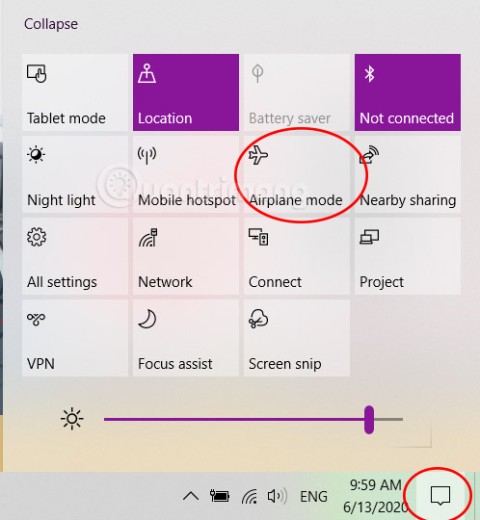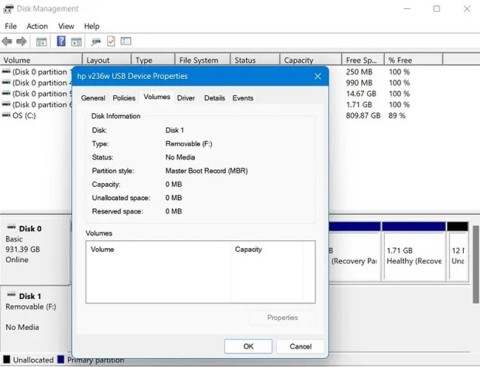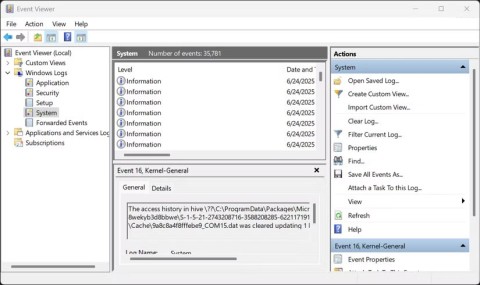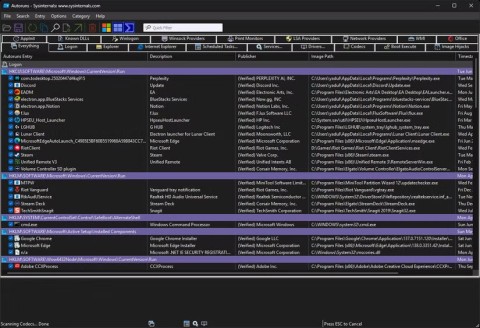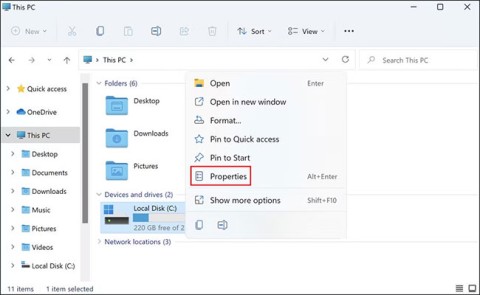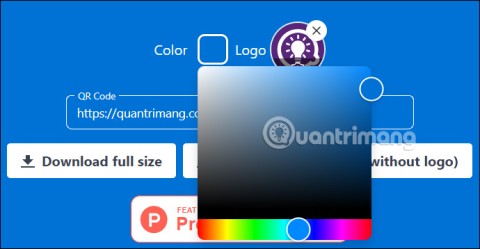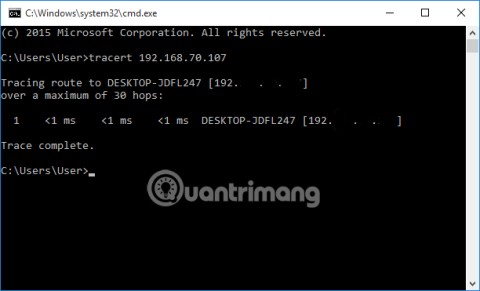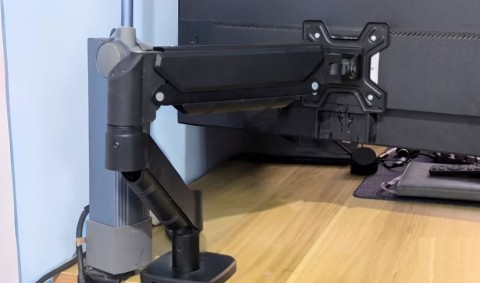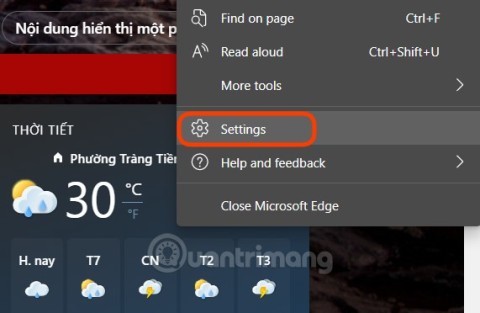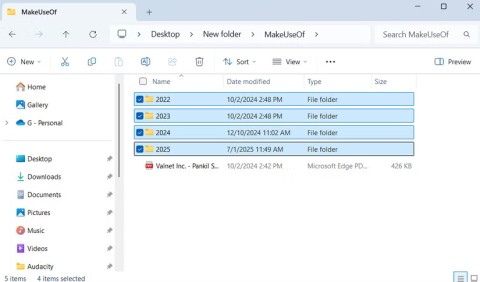Прости начини за стартиране на командния ред като администратор в Windows 10

Научете как да стартирате командния ред като администратор в Windows 10. Прости методи за достъп до CMD с администраторски права.
Windows е цялостна операционна система, която ви позволява да диктувате и управлявате разрешенията за достъп въз основа на активния в момента акаунт. Това прави доста по-лесно за администраторите да управляват компютри в тяхната организация, като им позволява да предоставят повишени разрешения на избрани лица.
Но какво ще стане, ако притежавате компютъра си? Как управлявате локални акаунти? Ами ако нямате администраторски акаунт? Заключен ли сте завинаги? Ако сте имали тези въпроси или наскоро сте се сблъскали с грешка, при която сте изисквали разрешението на администратора, тогава имаме идеалното ръководство за вас.
Ето всичко, което трябва да знаете за администраторските акаунти в Windows 11.
Бележка относно съвместимостта с Windows 10: Ръководствата на тази страница са компилирани с помощта на Windows 11, така че потребителският интерфейс, използван в екранните снимки, е на Windows 11. Но тези ръководства работят напълно и на Windows 10. Така че, не се колебайте да използвате ръководствата за Windows 11, както и за компютър с Windows 10.
Свързано: Как да търсите в Windows 11
Съдържание
Какво е администраторски акаунт в Windows 11?
Администраторският акаунт е най-високият акаунт в Microsoft Windows с най-високи привилегии. Това ви позволява като администратор да управлявате вашия компютър обаче, ако искате. Можете да правите промени в системните файлове, да инсталирате повишени програми, да променяте инсталацията на Windows, да настройвате персонализирана автоматизация и много други. Разрешението за извършване на такива задачи не е достъпно за стандартни или гостуващи потребители. Освен това, като администратор, можете да управлявате функциите на Windows и да диктувате кои са налични и достъпни за вашите потребители.
Защо имате нужда от администраторски акаунт?
Администраторският акаунт е акаунт с най-високи привилегии в Windows. Това означава, че можете да правите промени на системно ниво във вашата операционна система, като използвате администраторски акаунт без никакви ограничения. Ето някои от често срещаните причини, поради които може да се нуждаете от администраторски акаунт на вашия компютър.
и много повече. Може да има много причини, поради които имате нужда от администраторски акаунт в Windows 11, но знаете ли, че има два вида администраторски акаунти в Windows. Е, не точно, но ето всичко, което трябва да знаете за тях.
Свързано: Как да деактивирате звуковите сигнали за Windows 11
Влезте като администратор: Неща, които трябва да знаете
Windows по подразбиране се предлага с вграден акаунт на администратор, дори ако такъв не е наличен на заключения ви екран. Този акаунт по подразбиране се създава по време на вашата инсталация на Windows, за да одобри всички системни промени, направени на вашия компютър при настройката на Windows.
Освен това Windows също ви позволява да настроите допълнителен администраторски акаунт от вашия локален акаунт, ако имате необходимите разрешения. Можете също да преобразувате текущия си акаунт в акаунт на администратор, ако в момента използвате стандартен акаунт в Windows 11.
Създаването на всеки от тези акаунти има различни изисквания и в зависимост от текущата ви настройка можете да изберете някоя от настройките. Но в случай, че се опитвате да възстановите паролата на локалния си акаунт, тогава използването на администраторския акаунт по подразбиране е най-добрият ви залог, тъй като в този случай няма да можете да преминете през заключения екран.
Освен това, ето няколко често срещани неща, които трябва да имате предвид, преди да продължите с ръководствата по-долу.
Разлика между администраторския акаунт по подразбиране и предоставянето на администраторски достъп до потребителски акаунт
Администраторският акаунт по подразбиране е отделен акаунт, който е във всяка инсталация на Windows, независимо от вашето устройство или версия на Windows. Преобразуваният акаунт от друга страна е стандартен акаунт или акаунт за гост на вашия компютър, който е повишен до администраторски привилегии.
След като бъде повишен, вашият акаунт ще принадлежи към групата на администраторите и ще имате всички необходими администраторски разрешения, за да правите промени на системно ниво на вашия компютър. Администраторът по подразбиране се използва най-вече при опит за възстановяване на изгубени пароли за акаунти за локални потребителски акаунти на вашия компютър.
Преобразуването на акаунт от друга страна е прост процес на повишаване на разрешенията на текущия ви акаунт, което ще ви позволи да работите като администратор на текущото устройство. Администраторът по подразбиране може да бъде деактивиран във вашата система с проста команда, докато вашият локален акаунт ще трябва да бъде конвертиран отново, ако искате да върнете промените. Използвайте един от методите по-долу, който най-добре отговаря на текущите ви нужди.
Свързано: Как да деактивирате клавиатурата на Windows 11
Как да влезете като администратор в Windows 11
Можете да влезете като администратор в Windows 11, като използвате различните методи, които разгледахме ��о-горе. Можете да активирате администраторския акаунт по подразбиране, ако искате да направите временни промени на вашия компютър или да възстановите изгубена парола. Можете също да настроите нов администраторски акаунт за нов потребител, в случай че искате да споделите устройството си с някого. И накрая, можете да конвертирате текущия си локален акаунт в администраторски акаунт, ако сами искате да получите администраторски права на текущото устройство. Следвайте един от методите по-долу, който най-добре отговаря на вашите текущи нужди и изисквания.
Метод #01: Използвайте администраторския акаунт по подразбиране
Можете да използвате администраторския акаунт по подразбиране на вашия компютър с Windows 11, за да направите необходимите промени, като използвате ръководството по-долу. След като направите промените, можете да деактивирате акаунта, като използвате следващото ръководство. Да започваме.
1.1 Активирайте администраторския акаунт по подразбиране
Първо ще трябва да активираме/показваме администраторския акаунт на вашия компютър. Това може да стане с помощта на различни методи. Ако можете да преминете през заключения екран, тогава можете да използвате някой от тези методи. Ако обаче не можете да преминете през заключения екран, тогава ще трябва да получите достъп до CMD от заключения екран и да използвате ръководството по-долу. В такива случаи можете да използвате ръководството в долната част, за да активирате CMD направо от началния екран. Да започваме.
1.1.1 Използване на CMD
Стартирайте CMD на вашата система и въведете командата по-долу. След като сте готови, натиснете Enter на клавиатурата си, за да го изпълните.
net user administrator /active:yes

Сега командата трябва да бъде завършена успешно.

Натиснете клавиша Windows на клавиатурата и щракнете върху потребителското си име в долния ляв ъгъл. Сега в този раздел трябва да се вижда администраторски акаунт.
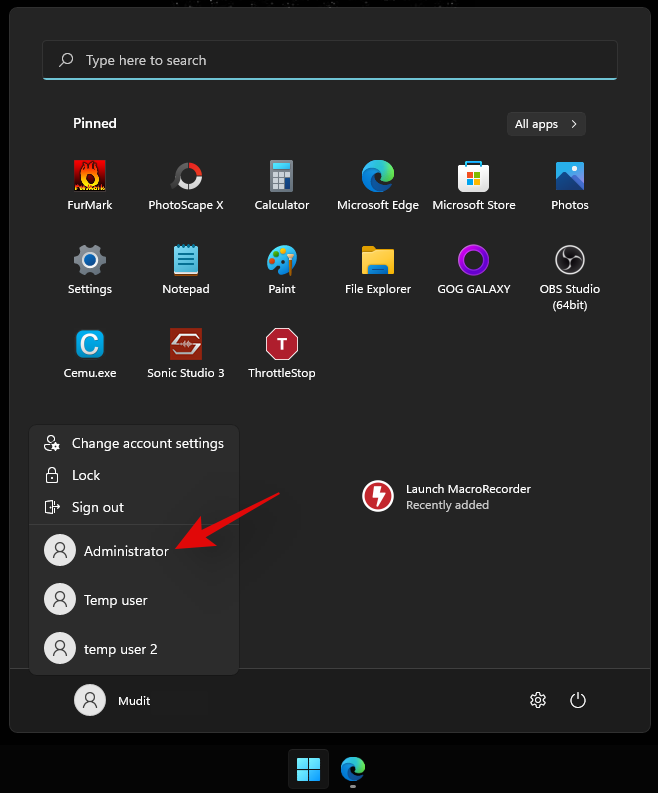
Това означава, че процесът е бил успешен. Вече можете да излезете от акаунта си и да влезете в администраторския акаунт. Администраторският акаунт по подразбиране няма парола и ще бъдете посрещнати от OOBE, след като влезете в акаунта. Вече можете да използвате следващите ръководства, за да нулирате паролата си за Windows, ако е необходимо.
1.1.2 Използване на администраторски инструменти
Натиснете Windows + Rклавиатурата си, за да стартирате диалоговия прозорец за изпълнение. Въведете следния термин след стартиране и натиснете Enter на клавиатурата си.
lusrmgr.msc
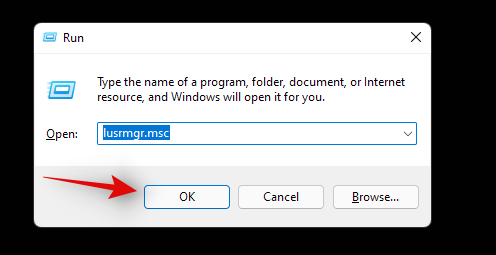
Мениджърът на локални групи вече ще бъде стартиран на вашия компютър. Започнете, като изберете „Потребители“ отляво.
Щракнете върху Администратор отдясно. Сега щракнете върху Още действия и след това върху Свойства .
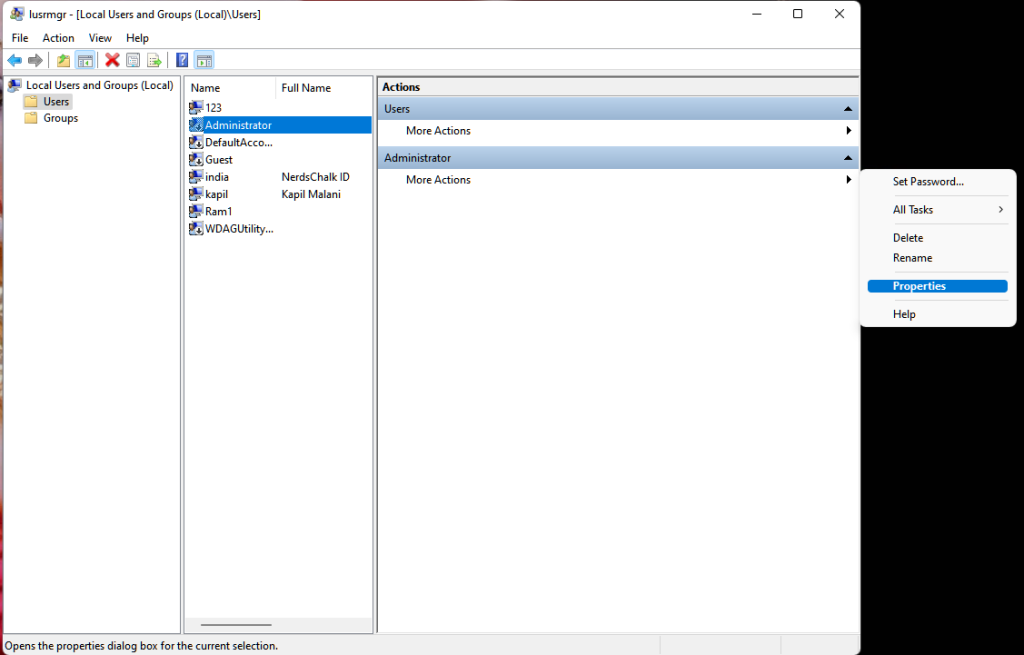
Сега на екрана ви ще се стартира нов прозорец. Премахнете отметката от опцията „Акаунтът е деактивиран“.
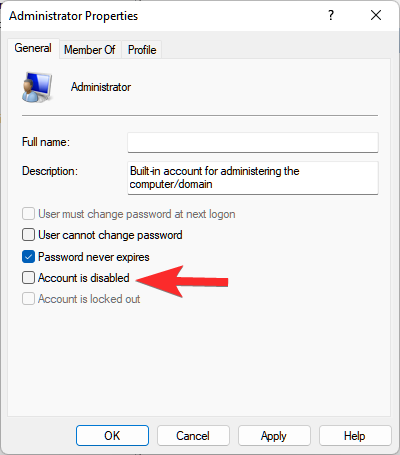
Щракнете върху „Приложи“ и след това върху „ОК“.
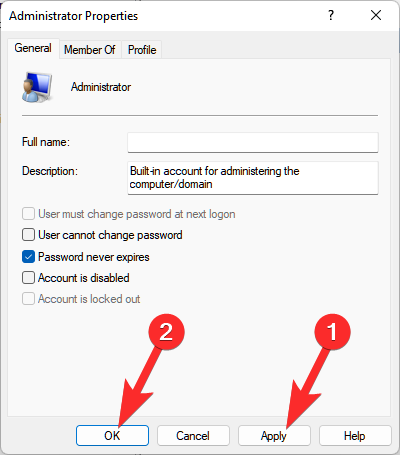
Затворете мениджъра на локални групи и активирайте менюто "Старт". Сега кликнете върху вашето потребителско име в долния ляв ъгъл и нов акаунт на „Администратор“ вече трябва да бъде наличен в този раздел. Вече можете да излезете от текущия си акаунт и да влезете в новия администраторски акаунт. Акаунтът няма да има парола и трябва да можете лесно да влезете в него, като просто щракнете върху „Вход“.
1.1.3 Използване на редактора на системния регистър
Методът на редактора на системния регистър е приложим само за потребители с Windows 11 Pro или по-нова версия, инсталирана на техните системи. Това е така, защото пътеката в системния регистър, до която трябва да получим достъп за този метод, е достъпна само за потребители на Windows 11 Pro или по-нова версия. Ако сте потребител на Windows 11 Home, вместо това можете да използвате метода CMD, изброен по-горе.
Натиснете Windows + Rна клавиатурата си и въведете следния термин. Натиснете Enter на клавиатурата си, след като сте готови.
regedit

Сега отидете до следния път. Можете също да копирате и поставите същото в адресната лента в горната част.
Computer\HKEY_LOCAL_MACHINE\SOFTWARE\Microsoft\Windows NT\CurrentVersion\Winlogon\SpecialAccounts\UserList

Когато е избран UserList отляво, щракнете с десния бутон върху празна област отдясно и изберете „Ново“.
Щракнете върху „DWORD (32-битова) стойност“.
Наименувайте стойността като „Администратор“ и натиснете Enter на клавиатурата си.
След като стойността бъде добавена, затворете редактора на системния регистър и рестартирайте компютъра си за добра мярка. Администраторски акаунт вече трябва да е наличен в долния ляв ъгъл на екрана ви, когато сте на заключения екран.
1.1.4 Използване на GPO
Ако използвате корпоративна машина, можете също да използвате редактора на групови правила, за да активирате администраторския акаунт по подразбиране на вашия компютър. Тази опция обаче няма да бъде достъпна за потребители с Windows 11 Home Edition. Следвайте ръководството по-долу, за да започнете.
Натиснете Windows + R, въведете следния термин и натиснете Enter на клавиатурата си, за да отворите редактора на групови правила на вашия компютър.
gpedit.msc
Придвижете се до следната директория с помощта на лявата странична лента.
Computer Configuration\Windows Settings\Security Settings\Local Policies\Security Options\
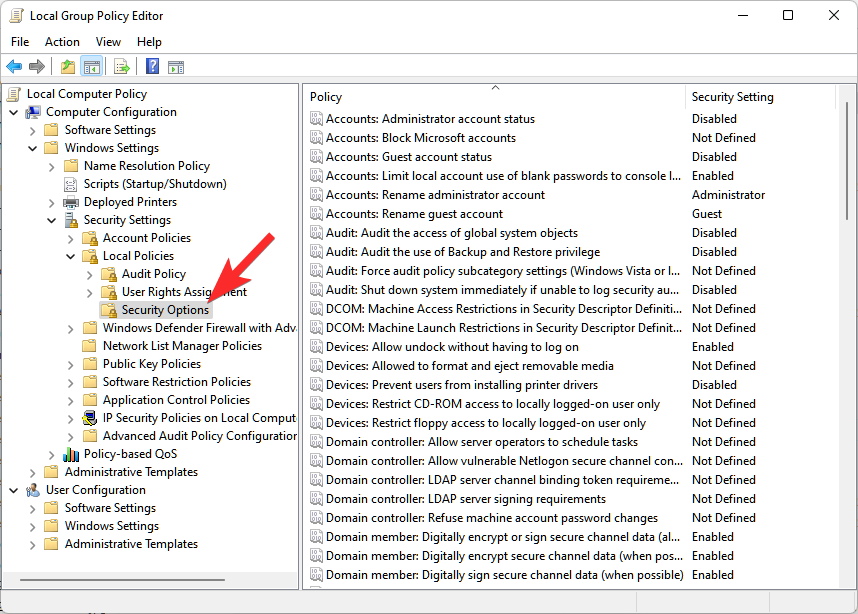
Сега щракнете двукратно върху следната стойност отдясно: Акаунти: Състояние на акаунта на администратор
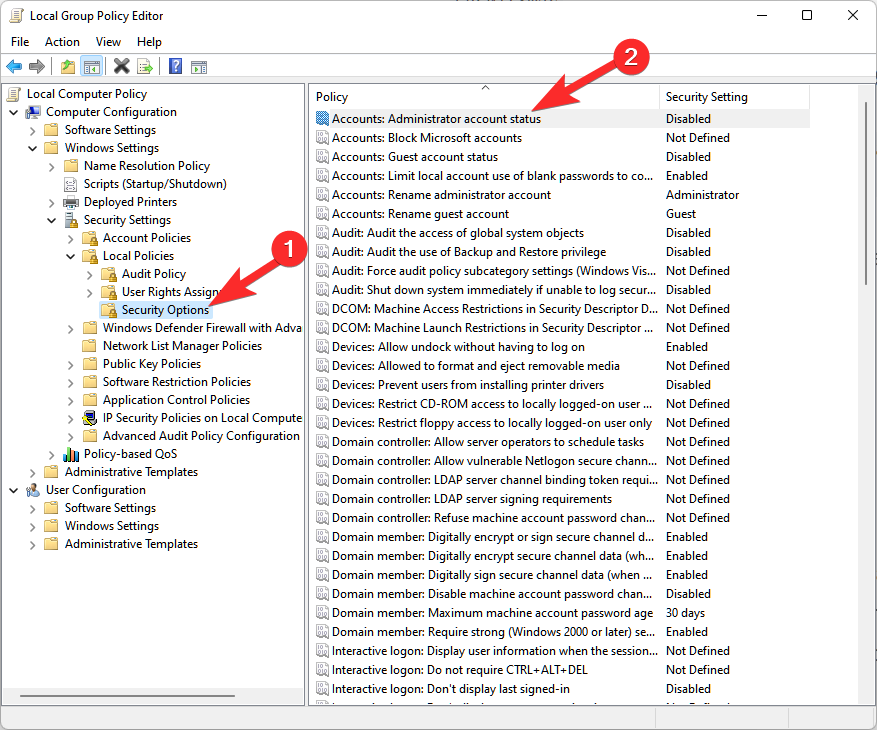
Изберете „Разрешено“.
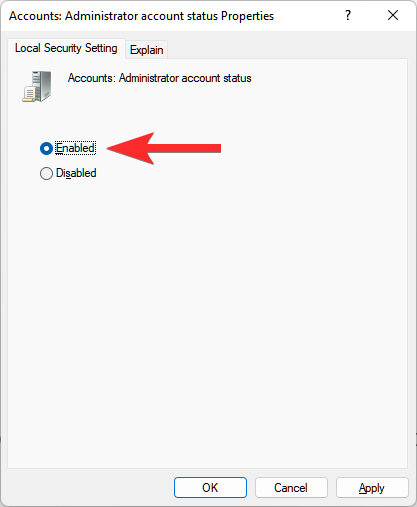
Щракнете върху „Приложи“ и след това върху „ОК“.
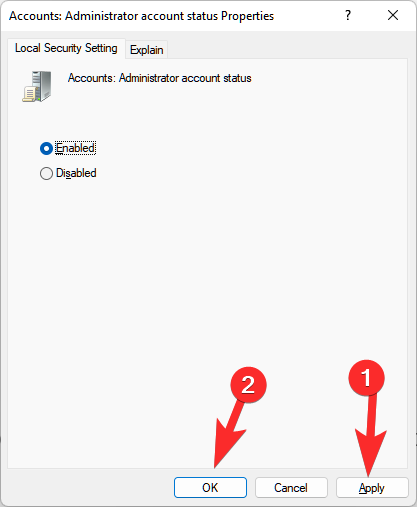
Затворете прозореца на GPO сега и натиснете клавиша Windows на клавиатурата си, за да отворите менюто "Старт". Сега щракнете върху вашето потребителско име в долния ляв ъгъл на екрана и вече трябва да ви бъде достъпен нов администраторски акаунт.
1.2 Деактивирайте администраторския акаунт по подразбиране
След като приключите с административните си задачи, се препоръчва да деактивирате администраторския си акаунт, за да предотвратите неоторизиран достъп до вашата система. Използвайте един от методите по-долу, който най-добре отговаря на вашите текущи нужди и изисквания. Да започваме.
1.2.1 Използване на CMD
Активирайте CMD на вашия компютър в зависимост от текущата ви настройка и въведете следната команда. Натиснете Enter на клавиатурата си, за да го изпълните.
net user administrator /active:no

И това е! Сега администраторският акаунт по подразбиране трябва да бъде деактивиран на вашия компютър.
1.2.2 Използване на администраторски инструменти
Press Windows + R and enter the following term in the Run dialog box. Press Enter on your keyboard once you are done.
lusrmgr.msc

Select ‘Users’ from the left sidebar and click on ‘Administrator’ on your right.
Select the checkbox for ‘Account is disabled’ option.
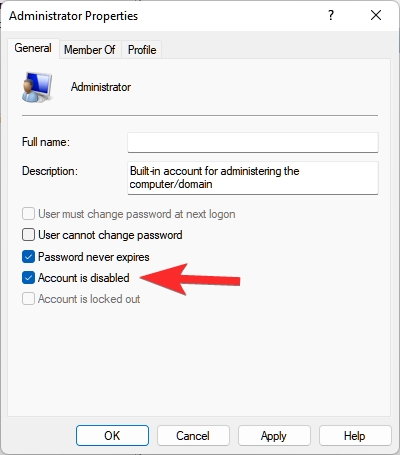
Click Apply and then OK.

Close the admin tools window and the default administrator account should now be disabled on your PC.
1.2.3 Using Registry Editor
Press Windows + R, type in the following, and press Enter on your keyboard to open the Registry Editor on your PC.
regedit

Once the registry editor opens, navigate to the path given below.
Computer\HKEY_LOCAL_MACHINE\SOFTWARE\Microsoft\Windows NT\CurrentVersion\Winlogon\SpecialAccounts\UserList

Click on ‘Administrator’ on your right and hit Del on your keyboard.
Confirm your choice by clicking on ‘Yes’.
Restart your PC and the default admin account should no longer be available on your lock screen.
1.2.4 Using GPO
Press Windows + R and type in the following. Press Enter on your keyboard once you are done.
gpedit.msc
Now navigate to the following path.
Computer Configuration\Windows Settings\Security Settings\Local Policies\Security Options\

Now double click on the following value on your right: Accounts: Administrator account status

Select ‘Disabled’.
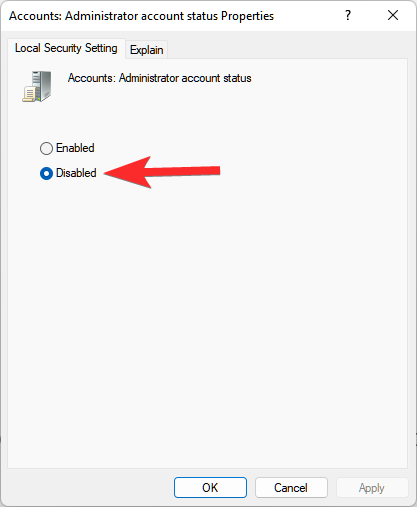
Click on ‘Apply’ and then on ‘OK’.
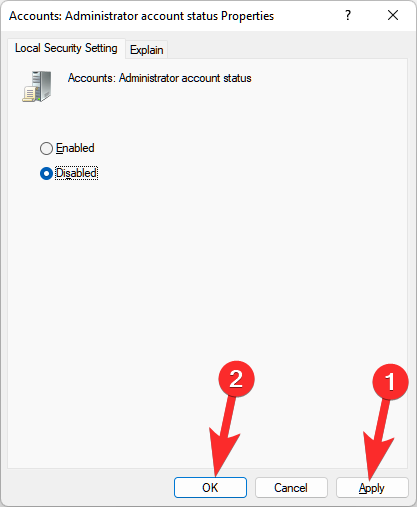
Close the GPO window.
The default administrator account will now be disabled on your PC via the Group Policy Editor in Windows 11.
1.3 Login as admin using command prompt (can’t get past the lock screen issue)
If you are locked out of Windows and would like to access the administrator account to reset your password then you will need to launch CMD from your lock screen first. You will need a recovery environment to proceed with this guide.
You will need to first access CMD using Windows installation media (a Windows bootable USB) for this guide and then follow the steps below. If using an installation media press Shift + F10 during the setup to launch CMD anywhere.
Follow the guide below to get you started once you have launched CMD as given above.
Once the command prompt launches, enter the following command and press Enter on your keyboard.
cd windows

You will now be taken to your default boot drive in CMD. Enter the following command and execute it by press Enter on your keyboard.
cd system32

You will now be in the System32 directory. Execute the command below to create a backup of utilman.exe.
copy utilman.exe utilman.exe.back

Execute the command below within CMD now.
copy cmd.exe cmd1.exe

Now let’s delete the default utilman.exe.
del utilman.exe

We will now rename CMD so that it can be accessed as utilman.exe.
rename cmd.exe utilman.exe

Once all the commands are executed successfully, close the command prompt by typing in the following command.
exit

Restart your PC and proceed to the Windows lock screen as you normally would. Click on the accessibility icon in the bottom right corner and you should now be able to access CMD on your lock screen. Follow the guide above to enable administrator account on your system. Once enabled, you can use the guide below to reset a local account’s password. Once you have reset your password it is highly recommended that you revert the changes we made to cmd.exe and utilman.exe earlier. Use the steps below to revert your changes.
Press Windows + S on your keyboard and search for CMD. Click on ‘Run as administrator’ once it shows up in your search results.
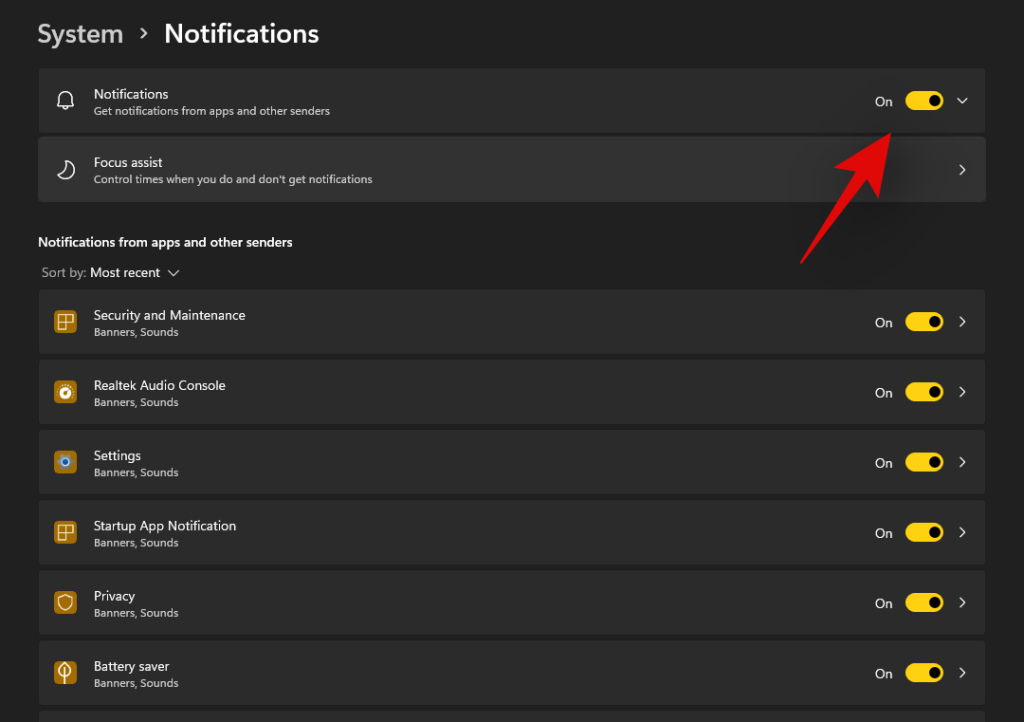
Now enter the following commands one by one and execute them to revert your changes. Make sure to execute each command one after the other without changing their order.
del utilman.exe
rename cmd1.exe cmd.exe
rename utilman.exe.back utilman.exe
CMD functionality should now be restored within Windows 11. You can check for the same by pressing Windows + R on your keyboard, typing in CMD, and hitting Enter on your keyboard. If CMD launches on your system then all the necessary changes have been reverted successfully.
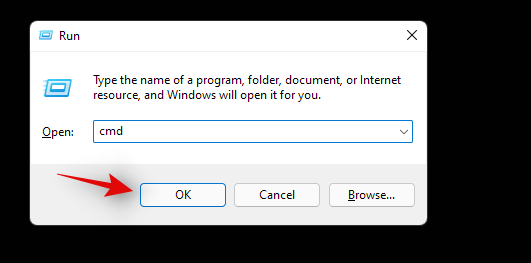
However, if CMD does not launch, make sure that you executed each command successfully on your system by re-verifying each one in the list above.
And that’s it! You should now be able to access CMD from your lock screen.
1.4 Reset password for a local account
You can now reset your local account’s password with the default administrator account we just enabled. Follow the steps below to get you started.
Log in to the Windows administrator account and then press Windows + S on your keyboard. Search for Control Panel and click and launch the app once it shows up in your search results.
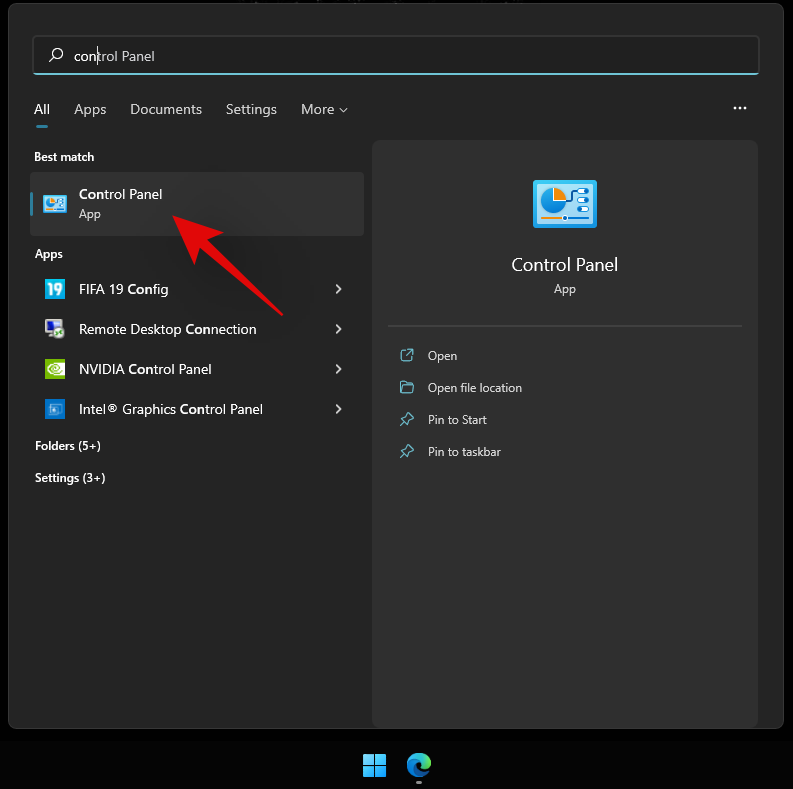
Click on ‘User Accounts’.
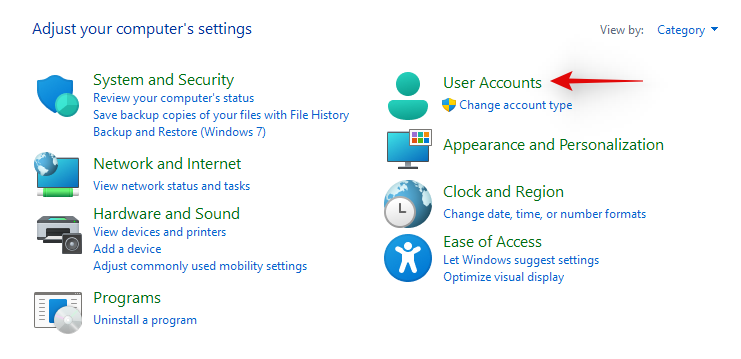
Click on ‘User Accounts’ again.
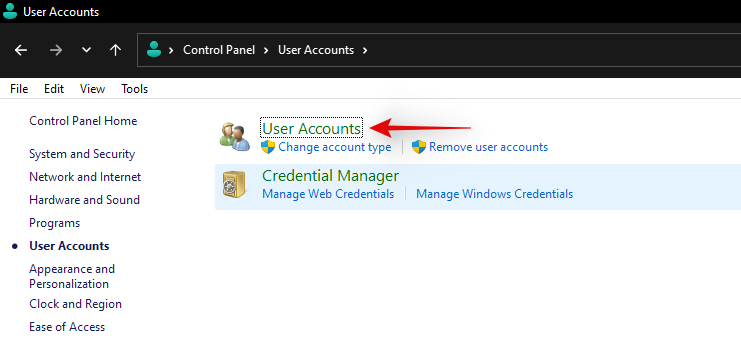
Click on ‘Manage another account’.
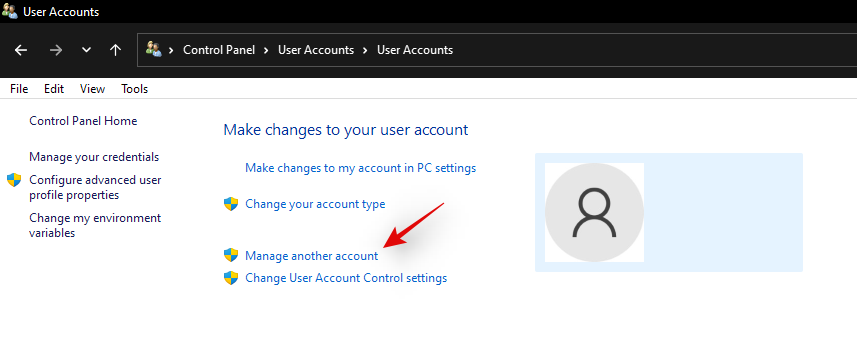
Click and select the account for which you wish to change the password.
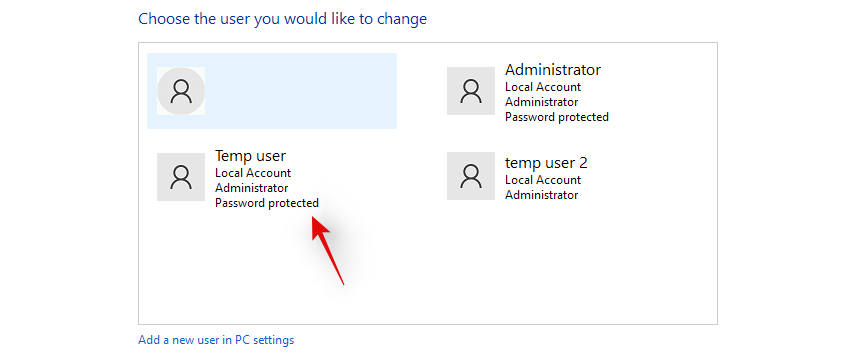
Now click on ‘Change the password’.

Type in your new password and confirm the same in the respective text boxes
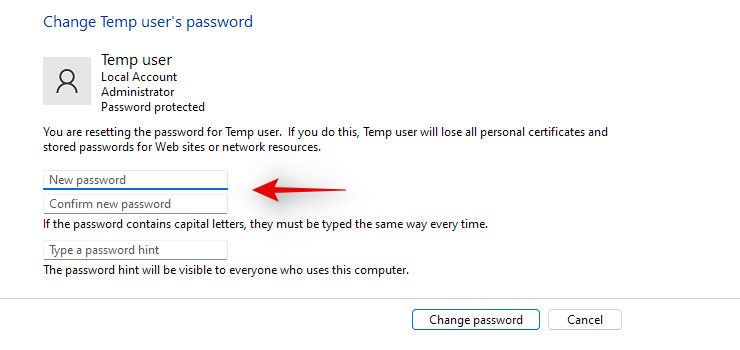
Set a password hint if needed.
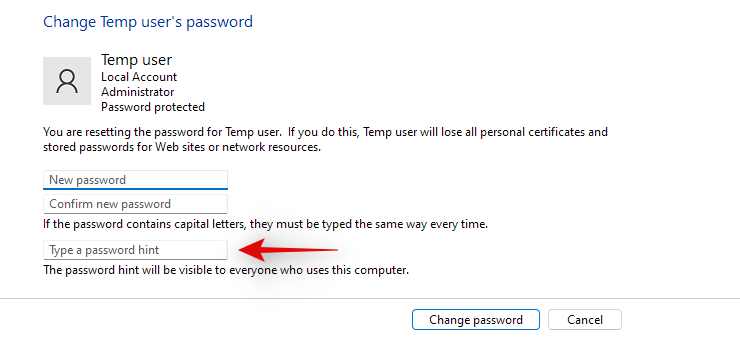
Click on ‘Change password’ once you are done.
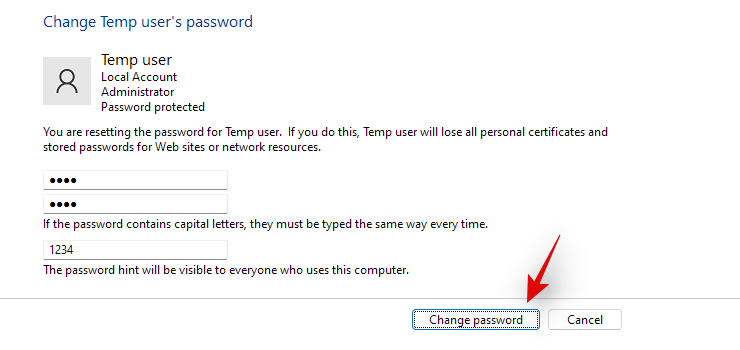
And that’s it! The password for the selected account should now be changed. You can now visit the lock screen and log into your local account using your new password. We recommend you revert any changes made at this point to maintain your security and privacy. You should revert any CMD changes made as well as disable the default administrator account on your system using the guides above.
Method #02: Create a new administrator account in Windows 11
If you wish to create a new administrator account in Windows 11, then you can follow the steps below. Please keep in mind that you will need administrator privileges to create a new administrator user account on your device. Follow the guide below to get you started.
Press Windows + i on your keyboard and select ‘Accounts’ from the left sidebar.

Click on ‘Family & other users’.
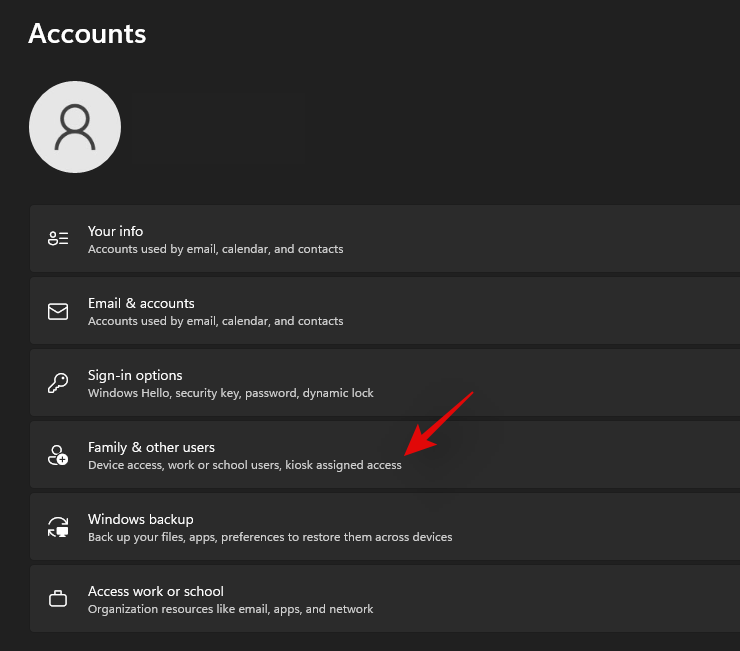
Click on ‘Add account’.

At this point, you can enter the Microsoft Account details of the new user and follow the on-screen steps to set up a new account. However, if you are looking to create a new local account then you can continue with the steps below.
Click on ‘I don’t have this person’s sign-in information’.
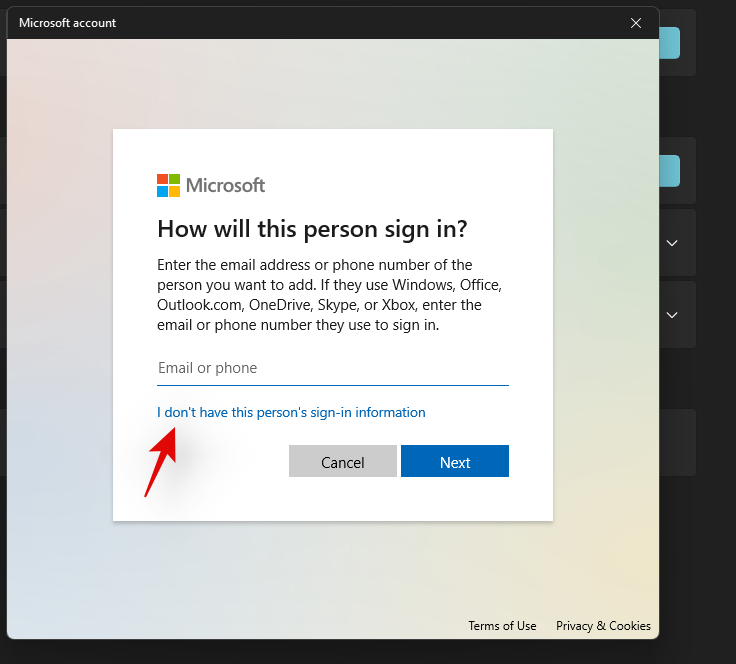
Click on ‘Add a user without a Microsoft account’.

Enter the name of the new user.
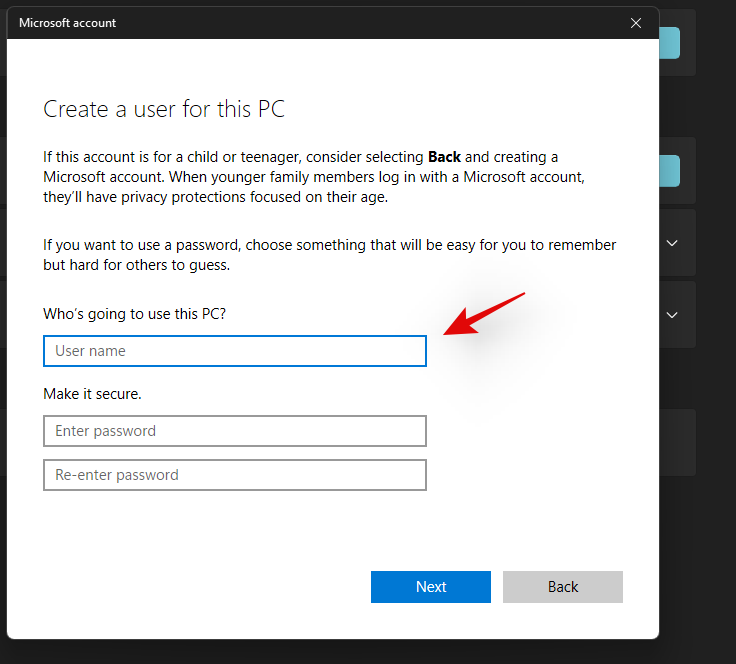
Now set a password and confirm the same.
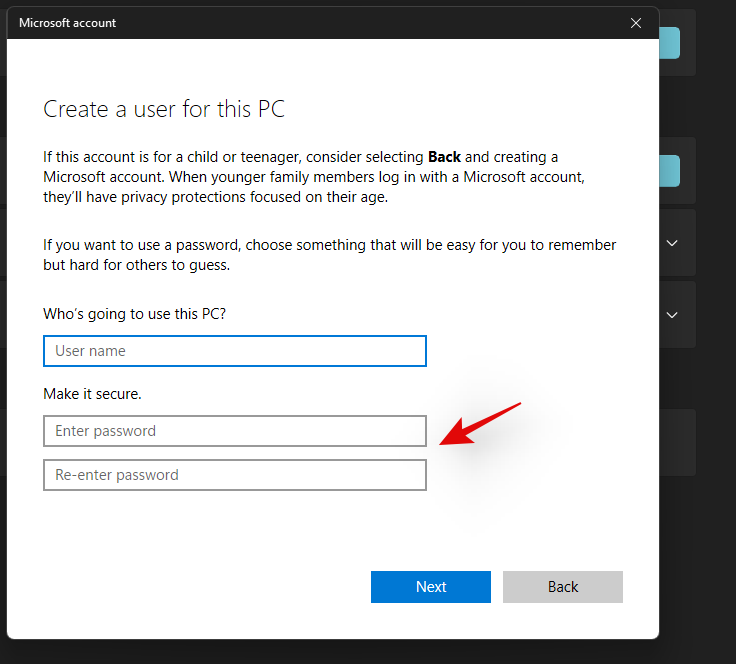
Click on ‘Next’ once you are done.
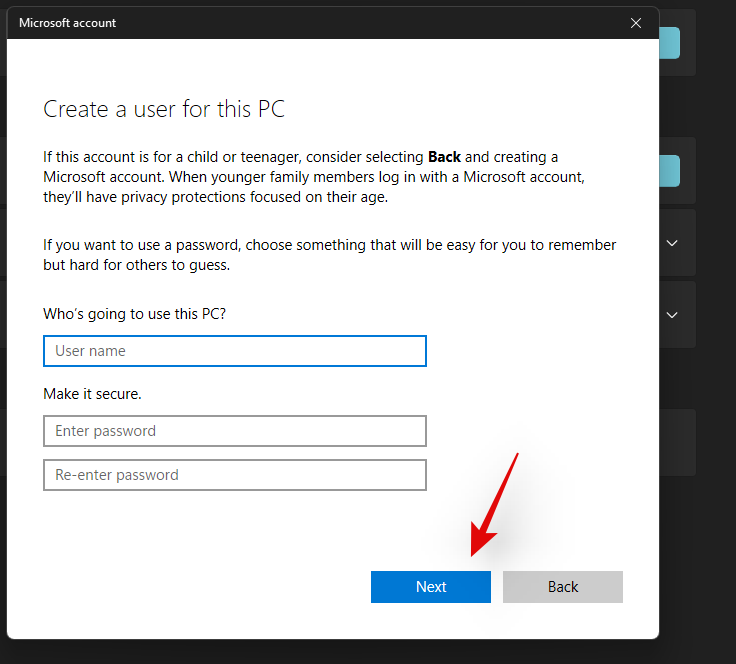 \
\
A new account will now be added to your PC. However, the newly added account is a standard account. Let’s convert it into an administrator account. Press Windows + S on your keyboard and search for Control Panel. Click and launch the app from your search results.
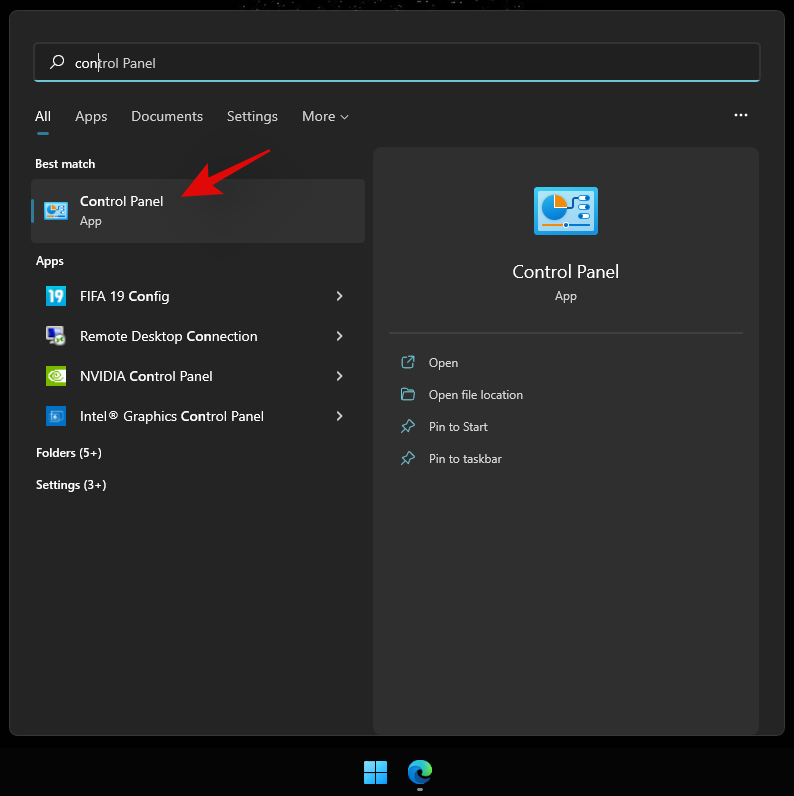
Click on ‘User Accounts’.
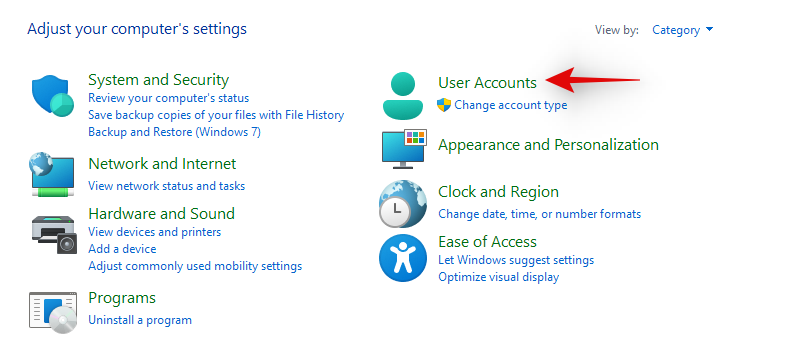
Click on ‘User Accounts’ again.
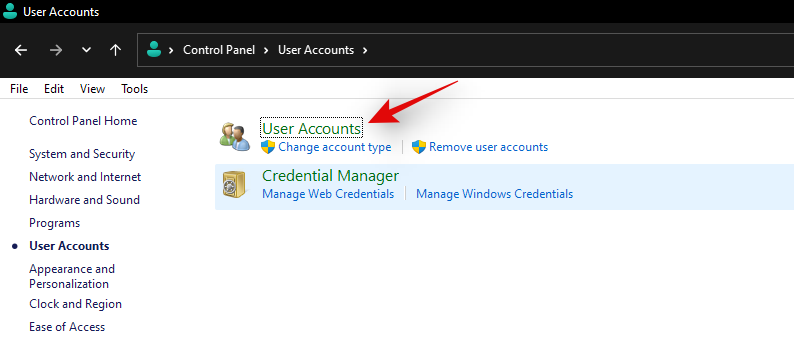
Click on ‘Manage another account’.
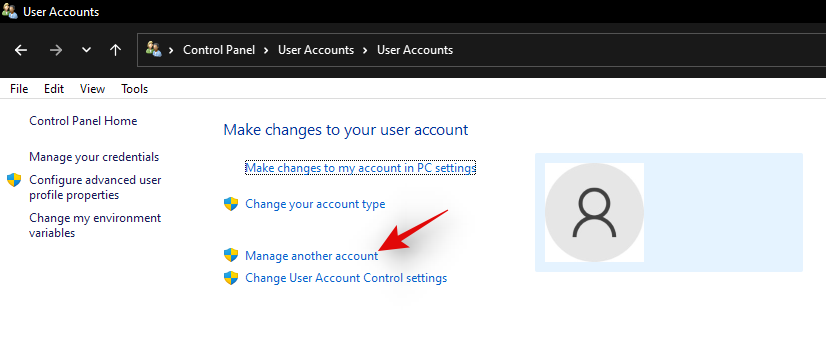
Now click and select the new account you just created.
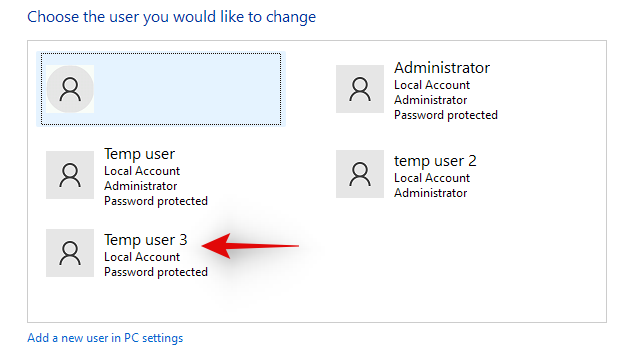
Click on ‘Change the account type’.

Click and select ‘Administrator’.
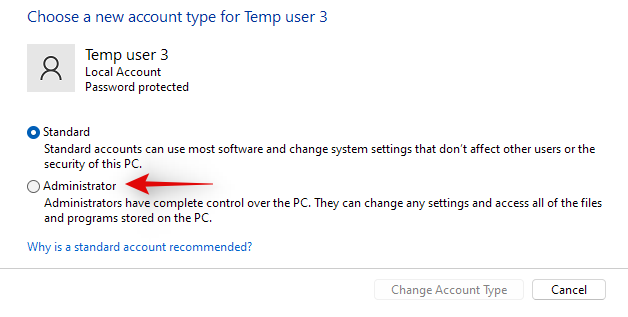
Finally, click on ‘Change account type’.
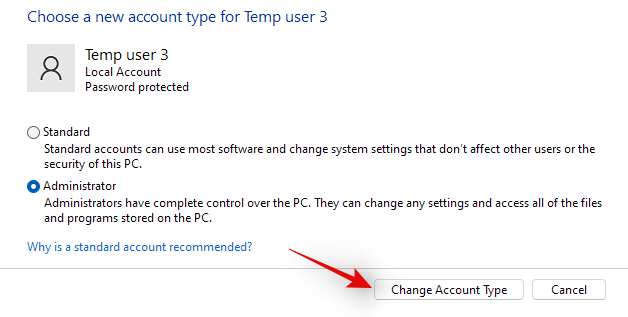
And that’s it! You will now have created a new local administrator account on your device.
Method #03: Change a standard account to an administrator account
If you have a standard account then you can simply switch to an administrator account. If using the Windows Home edition then you can either use the Control Panel method or the ‘netplwiz’ method. On the other hand, Windows Pro and higher users can use either of the methods listed below. Let’s get started.
Note: If you are logged in as a standard user and would like to convert the same account to an administrator account then we recommend you use the netplwiz guide in the methods below.
3.1 Using Control Panel (Windows home)
Press Windows + S on your keyboard, search for Control Panel and launch the app once it shows up in your search results.

Click on ‘User Accounts’.

Click on ‘User Accounts’ again.

If you wish to change your own account’s type then click on ‘Change your account type’. If you wish to convert another local account then select ‘Manage another account’ and select the concerned account. Once selected, click on ‘Change account type’.

Select ‘Administrator’.

Click on ‘Change account type’.

And that’s it, the concerned account should now be an administrator account on your system.
3.2 Using netplwiz
You can also use netplwiz to your advantage and convert user accounts on your PC. Follow the guide below to get you started.
Press Windows + R on your keyboard to launch the run dialog box. Once launched, type in the following and press Enter on your keyboard.
netplwiz
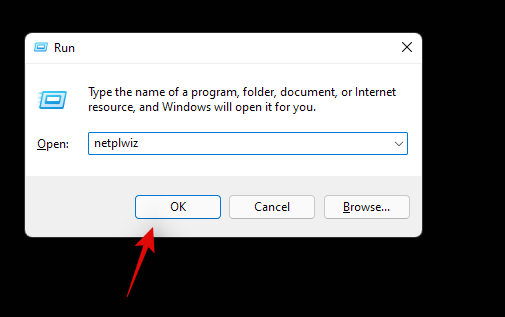
Check the box for ‘Users must enter a user name and password to use this computer’ at the top.
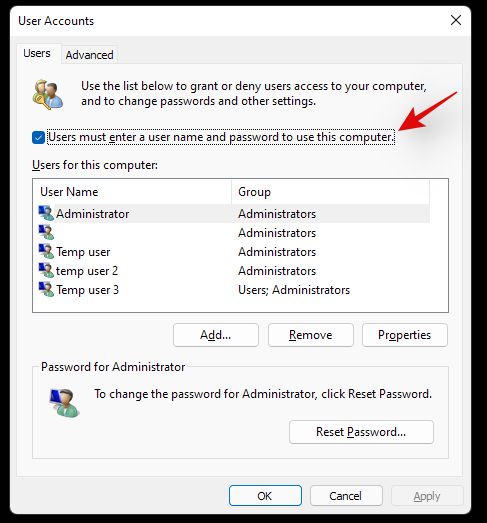
Now click and select the user account you wish to convert from the list below.
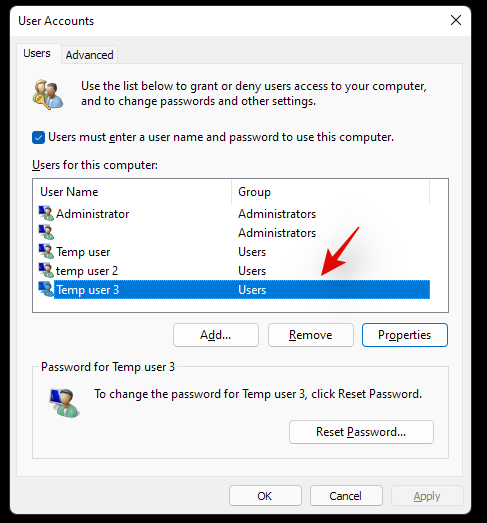
Click on ‘Properties’.

Switch to the ‘Group Membership’ tab at the top.
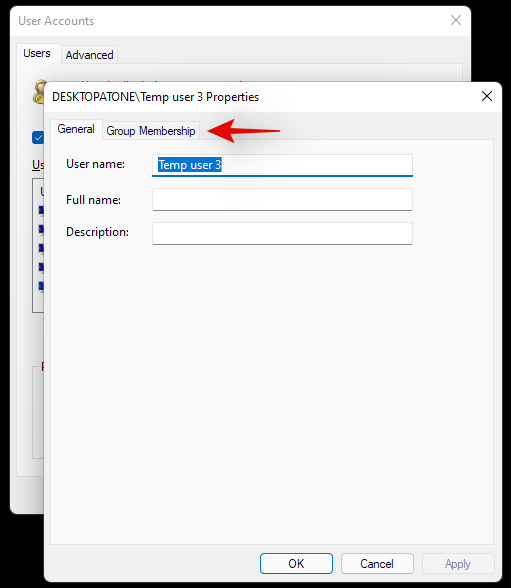
Click and select ‘Administrator’.
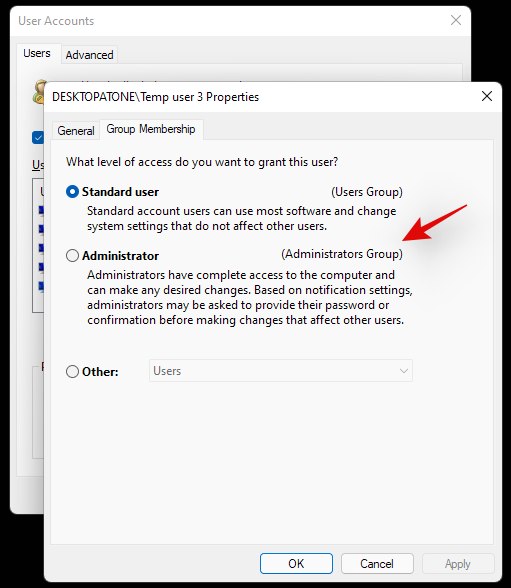
Click on ‘Ok’ twice, once you are done.
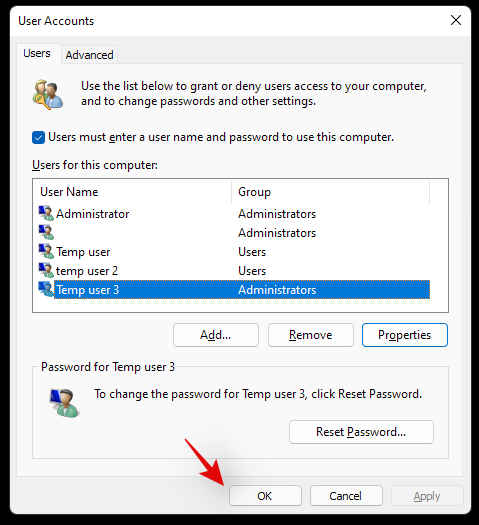
If you converted the current local account that you are signed in with then you will be prompted to re-login to the account for the changes to take effect. Click on ‘Yes’ to confirm your choice.
You will now be taken to the lock screen. Login to the concerned account and you should now have administrator privileges within it.
3.3 Using Local groups manager (Windows Pro and higher)
Press Windows + R on your keyboard, type in the following, and press Enter on your keyboard.
lusrmgr.msc
The local groups manager should now launch on your PC. Click and open ‘Users’ on your left.
Now select the desired User account that you wish to convert from your right and double click on it.
Switch to the ‘Member of’ tab and select the ‘Administrator’ group.
Click on ‘Ok’ once you are done.
And that’s it! The selected account will now have elevated administrator privileges within Windows.
Can you set or reset a password when logged in as an administrator?
Yes, you can easily reset your password as an administrator in Windows 11. This can be done in multiple ways and you can reset the password for a standard account or an administrator account using this method. This can be quite useful if you have forgotten your password and would like to get back into your system without losing your data.
However, you should keep in mind that this can be used by anyone to change your password and get access to your system. Hence, it is recommended that you set a secure password for your default account whenever possible.
For now, you can use the guide below to reset a password in Windows 11 when logged in as an administrator.
How to reset the password once logged in as an administrator
Resetting your password is quite easy when you are logged in to Windows 11 as an administrator. The best way to do this is by using either the Control Panel or CMD. Use one of the guides below that best fits your current needs and requirements. Follow any one of the guides below to get you started.
1. Using Control Panel
Press Windows + S and search for Control Panel. Click and launch the app from your search results.

Click on ‘User Accounts’.

Now click on ‘User Accounts’ again.

Click on ‘Manage another account’.

Now click and select your local account for which you wish to reset your password.

Click on ‘Change the password’.

Add a new password for your local account and confirm the same in their respective text boxes.

Now add a password hint if required.

Click on ‘Change password’ once done.

And that’s it! The password for the selected account should now be changed based on your preferences.
2. Using CMD
You can also reset a local account’s password using CMD. Follow the guide below to get you started.
Press Windows + S on your keyboard and search for CMD. Click on ‘Run as administrator’ once the app shows up in your search result.
Type in the following and press Enter on your keyboard.
net user

You will get a list of all the accounts currently available on your PC. Make a note of the desired account’s username and then type in the command below. Replace ‘NAME’ with the name you noted down earlier and replace ‘PASSWORD’ with your new password. Once done, press Enter on your keyboard.
net user NAME PASSWORD
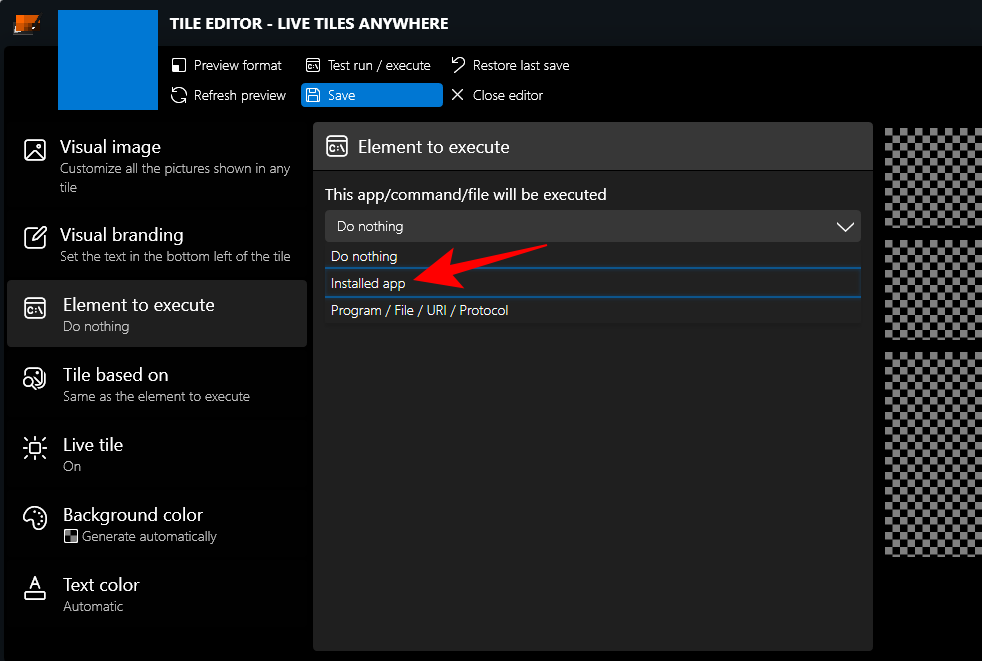
And that’s it! Once the command is executed, the password for the desired account should be automatically changed on your PC.
How to add a password for the administrator account
If you are looking to secure your PC further then it is recommended that you add a password for the default administrator account. This will ensure that no one aware of this trick can access your Windows account without your authorization. We can add a password for your default admin account in several ways but we recommend you do so either via the advanced menu or via the CMD method. Follow any one of the guides below to get you started.
1. Using Ctrl + Alt + Del
Log in to the default administrator account and press Ctrl + Alt + Del on your keyboard.
Now click and select ‘Change password’.
Enter a new password and confirm the same in their respective fields.
Add a password hint or security question depending on your preferences.
Click on ‘Ok’ once you are done.
And that’s it! Your default administrator account’s password should now be changed on your PC.
2. Using CMD
Log in to the default administrator account and press Windows + S on your keyboard. Search for CMD and click on ‘Run as administrator’ once the app shows up in your search results.
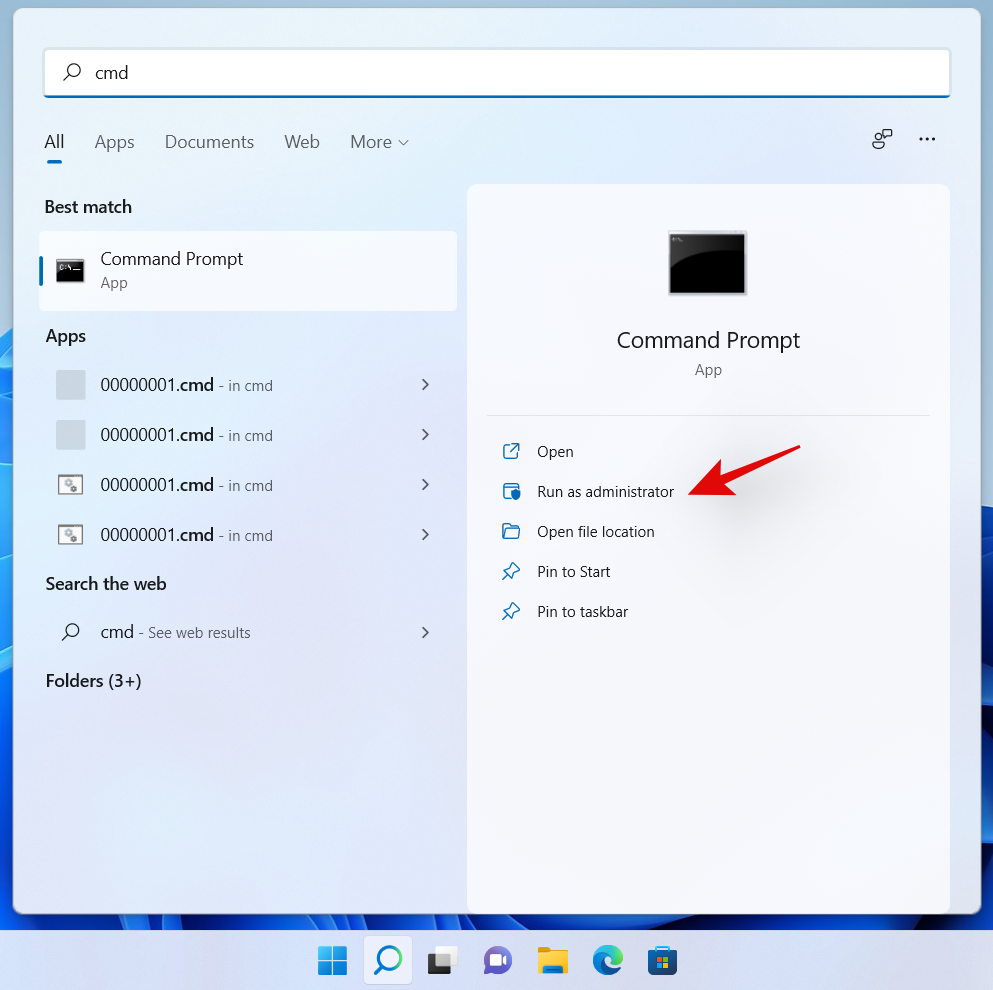
Now enter the following command. Replace ‘PASSWORD’ with a password of your desired choice.
net user Administrator PASSWORD

And that’s it! The new password should now be set for your default administrator account.
Should you keep the administrator account enabled?
No, it is not recommended to keep your default/super administrator account enabled. This account has higher and more elevated privileges when compared to a normal administrator account in Windows. This account is used by Windows to perform system-level tasks in the background as well hence it could cause several privacy issues on your system.
In case somebody can access this account, they would have access to your entire data and hardware. The user could then proceed to take control of your entire system or simply infect it with malware, adware, and in the worst cases, ransomware.
We hope you were able to easily log in as an administrator in Windows 11 using the guide above. If you face any issues or have any more questions for us, feel free to reach out to us using the comments section below.
Related:
Научете как да стартирате командния ред като администратор в Windows 10. Прости методи за достъп до CMD с администраторски права.
Windows е цялостна операционна система, която ви позволява да диктувате и управлявате разрешенията за достъп въз основа на активния в момента акаунт. Това прави доста по-лесно за администраторите да управляват P...
Има много причини, поради които вашият лаптоп не може да се свърже с WiFi и следователно има много начини за отстраняване на грешката. Ако вашият лаптоп не може да се свърже с WiFi, можете да опитате следните начини за отстраняване на този проблем.
След като създадат USB зареждане за инсталиране на Windows, потребителите трябва да проверят производителността на USB зареждането, за да видят дали е създадено успешно или не.
Няколко безплатни инструмента могат да предскажат повреди на устройството, преди да се случат, което ви дава време да архивирате данните си и да смените устройството навреме.
С правилните инструменти можете да сканирате системата си и да премахнете шпионски софтуер, рекламен софтуер и други злонамерени програми, които може да се крият във вашата система.
Когато компютър, мобилно устройство или принтер се опита да се свърже с компютър с Microsoft Windows по мрежа, например, може да се появи съобщение за грешка „мрежовият път не е намерен — грешка 0x80070035“.
Синият екран на смъртта (BSOD) е често срещана и не нова грешка в Windows, която се появява, когато компютърът претърпи някаква сериозна системна грешка.
Вместо да извършваме ръчни операции и операции с директен достъп в Windows, можем да ги заменим с налични CMD команди за по-бърз достъп.
След безброй часове, прекарани в използване на лаптопа и настолните си високоговорители, много хора откриват, че няколко умни подобрения могат да превърнат тясното им общежитие в най-добрия стрийминг център, без да разоряват бюджета си.
От Windows 11 Internet Explorer ще бъде премахнат. В тази статия WebTech360 ще ви насочи как да използвате Internet Explorer в Windows 11.
Тъчпадът на лаптопа не е само за посочване, щракване и мащабиране. Правоъгълната повърхност поддържа и жестове, които ви позволяват да превключвате между приложения, да контролирате възпроизвеждането на медии, да управлявате файлове и дори да преглеждате известия.

